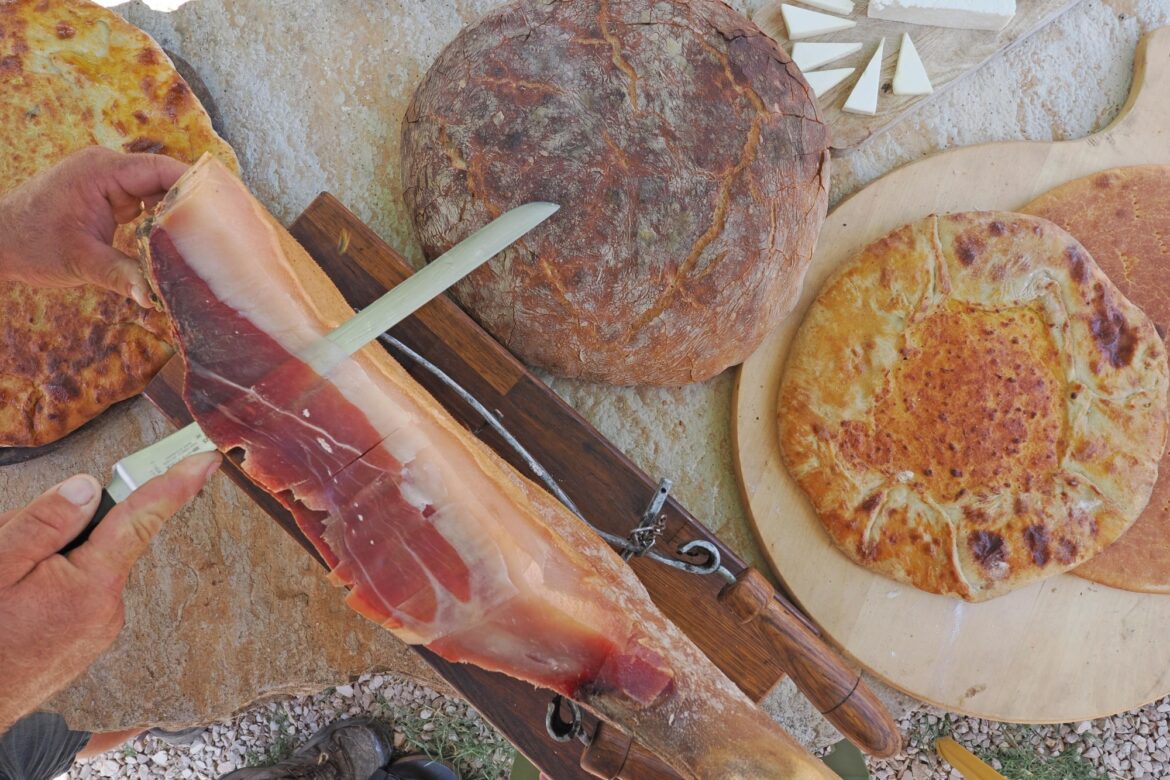When you think of Dalmatia, the first image that probably comes to mind includes turquoise sea, the scent of pine trees, and the sound of cicadas as you enjoy a coffee on the promenade. But what many forget – or better yet, are only just beginning to discover – is that the true charm of Dalmatia often doesn’t lie on the coast, but just a few kilometers inland, in the quiet, green corners of the Zadar hinterland. This landscape, which combines the scents of childhood, tradition, and authentic Dalmatian hospitality, is becoming an increasingly important destination for travelers who seek more than postcards and beaches.
In recent years, the Zadar hinterland has been experiencing its own tourist renaissance. In the rural landscapes of Ravni Kotari, Bukovica, and the fertile plains around Benkovac, family farms, wine stories, museums, and agritourism are flourishing, offering what you can’t find in crowded tourist hotspots: silence, sincere people, and flavors that take you back to childhood. If you’ve had enough of fast-paced, superficial vacations, if you want to know who cooked your soup and what the olive tree looks like that gave you the oil on your salad – the Zadar hinterland is waiting just for you.
What does the Zadar hinterland include?
The Zadar hinterland covers a wide area between the Adriatic coast and the Velebit mountains, stretching from Ravni Kotari and Bukovica, through the Benkovac region, all the way to the mountain foothills. Here, time flows more slowly, people smile and have time to talk, and every bite of food or glance at the landscape tells a story.
This is a region that successfully combines rich cultural and natural heritage with a growing offer of sustainable tourism. The villages preserve the spirit of the past through architecture, customs, and everyday life, while at the same time offering modern experiences to visitors who want more than a typical holiday.
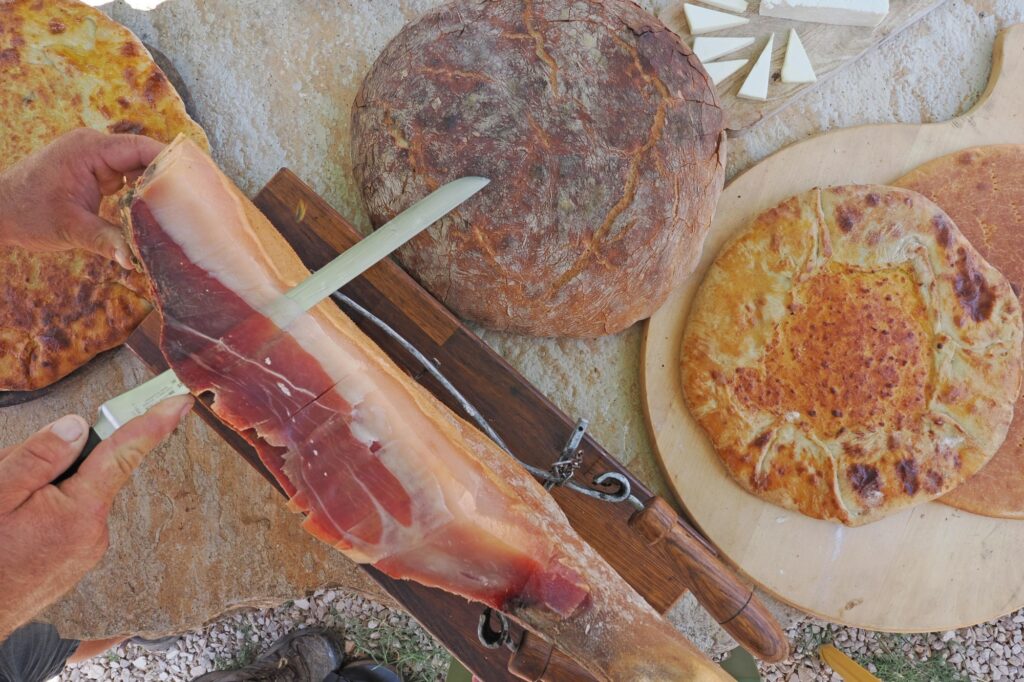
Authenticity and Flavors on the Family Farms of the Zadar Hinterland
If you want to truly understand this region, the best place to start is – at the table. More precisely, at a home table full of local specialties, served on the terrace of a family farm (OPG) with a view of vineyards or olive groves. In the Zadar hinterland, especially between Biograd and Benkovac, you’ll find many farms involved in the Welcome – taste & buyinitiative, which offer exactly that: experience, flavor, aroma, and story.
In Gornji Ceranj, you’ll find the Mate Gašpar farm, where the entire family welcomes you – literally. Their five sons help serve dishes such as lamb and veal under the peka, prisnac – a traditional savory cheese pie – and corn priska, which is not baked, but sung. Because here, every dish has its rhythm, and every dinner ends with laughter.
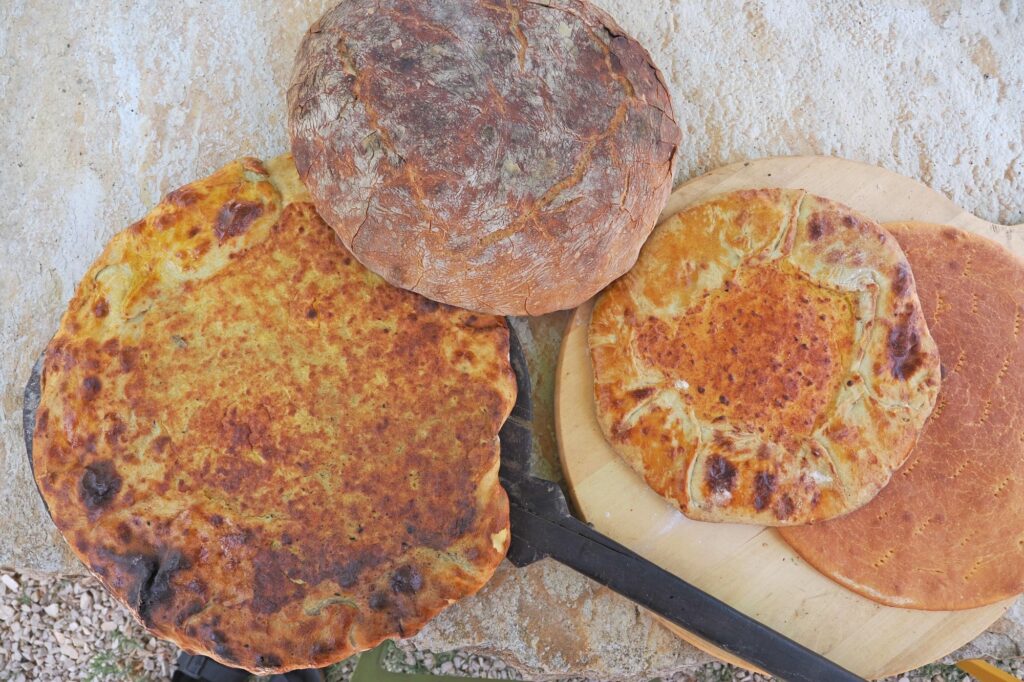
Not far away, in the village of Polača, Milenko Zagorac’s farm produces “Olea Tinia” oil, the result of devoted work in the olive groves that stretch across the slopes of Tinj. The tasting room is modernly designed, but the warmth with which the hosts welcome you recalls old times. Vesna Zagorac serves olive oil, cheese, pancetta, homemade bread, and wine with love and pride, while telling the kind of unforgettable family story that stays with you.
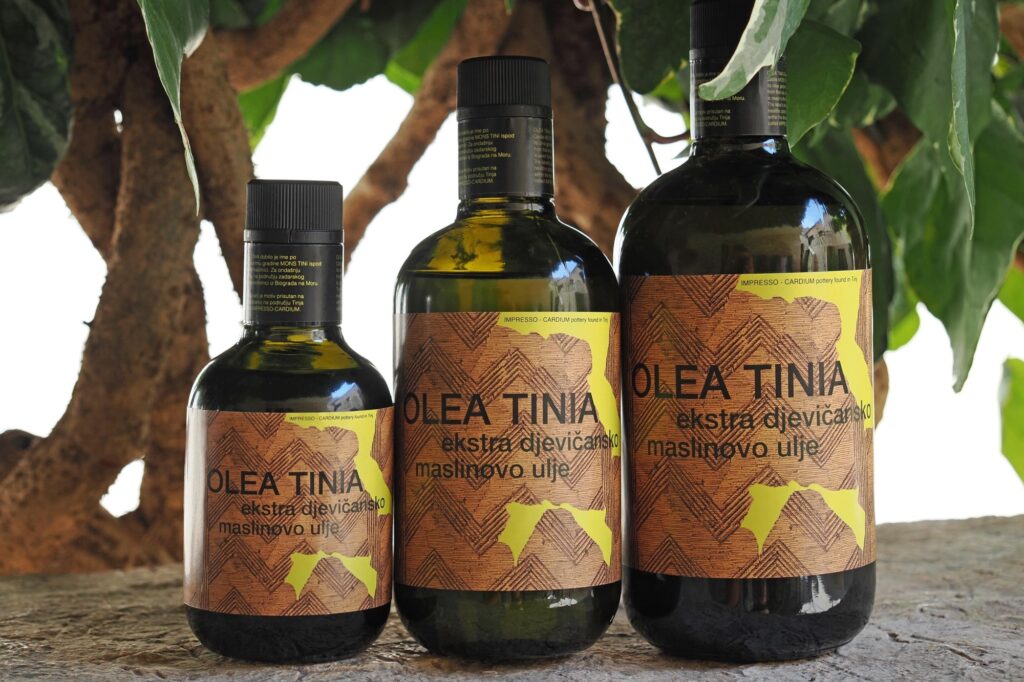
To round off this authentic gastro journey, stop in Šopot near Benkovac at Lola’s Vatrenica, an agritourism run by Doris Ćusa, one of the daughters of the legendary Lola. Alongside freshly baked bread, homemade cured meats, and the famous Benkovac prisnac, she shares stories about her father, about tradition, and about life here. At the end, I even met donkeys that provide milk – something I didn’t expect, but gladly tried. And yes, surprisingly, it was delicious.
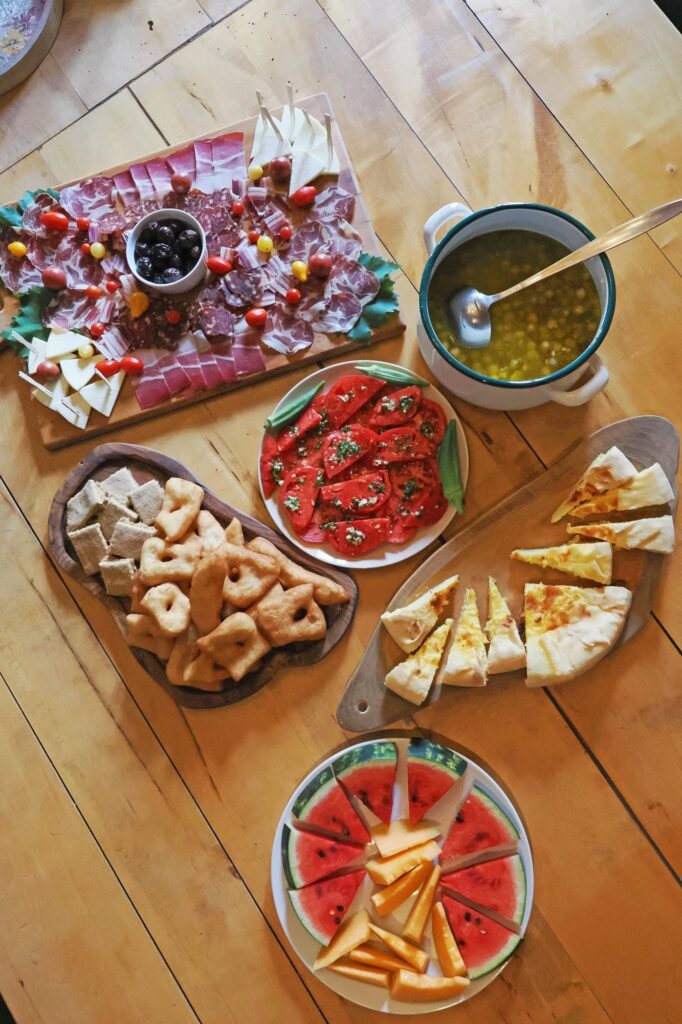
The Best Wines of the Zadar Hinterland
Wine lovers don’t need to look any further, as the wineries of this region seriously compete on Europe’s wine map. Škaulj Winery in Nadin offers certified organic wines and a unique tasting experience in the fairytale setting of vineyards. The winery also gained recognition thanks to a visit by the Swedish royal family, and the wine “Royal,” named after the king, proves that even small vineyards can reach international heights.
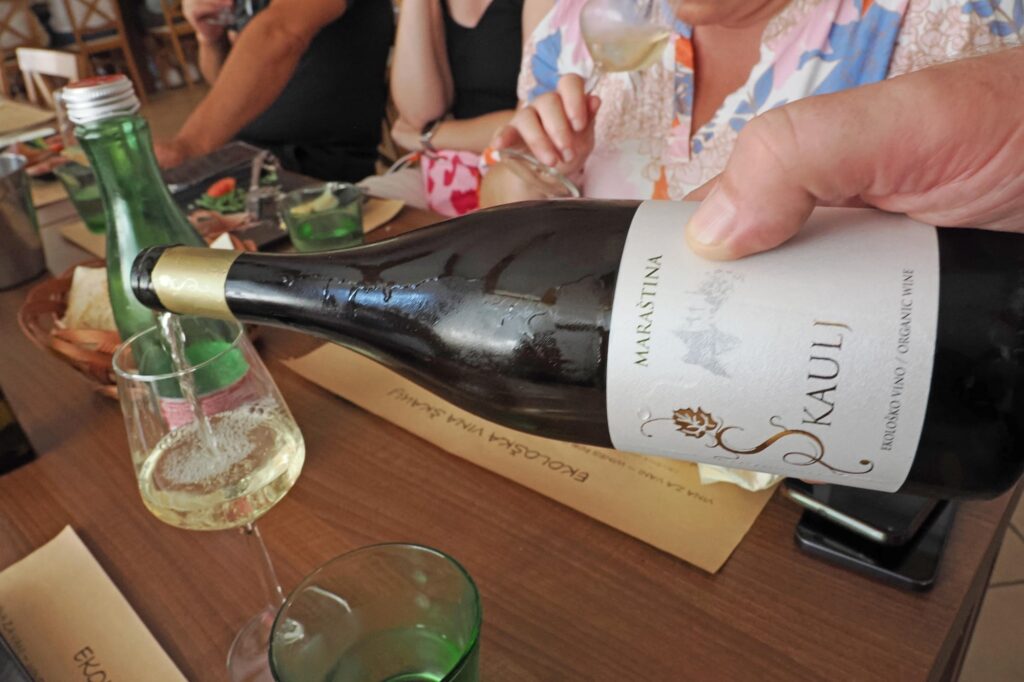
Benkovac: A Blend of Market, Museum, and Character
If your visit coincides with the 10th of the month, don’t miss the Benkovac Fair. It’s the most famous fair in this part of Croatia, where thousands of people come to buy, sell, browse, and chat. Everything is on offer – from antiques and handicrafts to prosciutto, vegetables, and even tractors. A new covered space has given the fair fresh momentum, but the atmosphere remains the same – dynamic, authentic, and full of life.
In the center of Benkovac, you’ll also find the Heritage Museum, which preserves everyday objects, costumes, tools, and the history of the region. If you want to understand why people here speak with heart and taste with soul, step into the past. The museum is located in the impressive medieval fortress Kaštel Benković, built on a hill above the town. This fortress, which changed owners and functions throughout history, now houses a rich collection of archaeological, ethnographic, and cultural-historical items from Ravni Kotari. The exhibition is particularly engaging, guiding you through hundreds of years of local history.
Perhaps, just like me, you’ll feel as though you’ve stepped into a real time capsule of the Zadar hinterland. In the archaeological collection, housed in the castle tower itself, you’ll find artifacts from archaeological sites such as Asseriaand Karin, stone relics, and a lapidarium that literally tells the story of millennia of human settlement in this area.
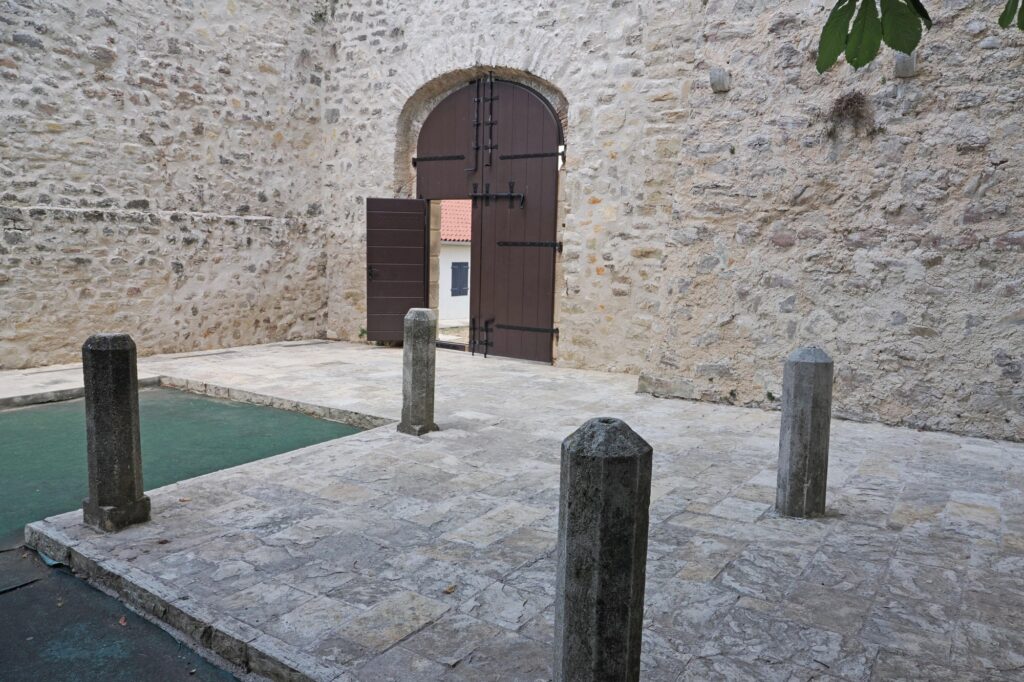
The ethnological collection reveals how people lived here a hundred years ago – through traditional costumes, old tools, and everyday objects, you can sense the spirit of bygone times. The cultural-historical and documentary collection additionally offers insight into Benkovac as an important trading and strategic center that, over the last two hundred years, changed hands between at least ten states – each leaving its mark.
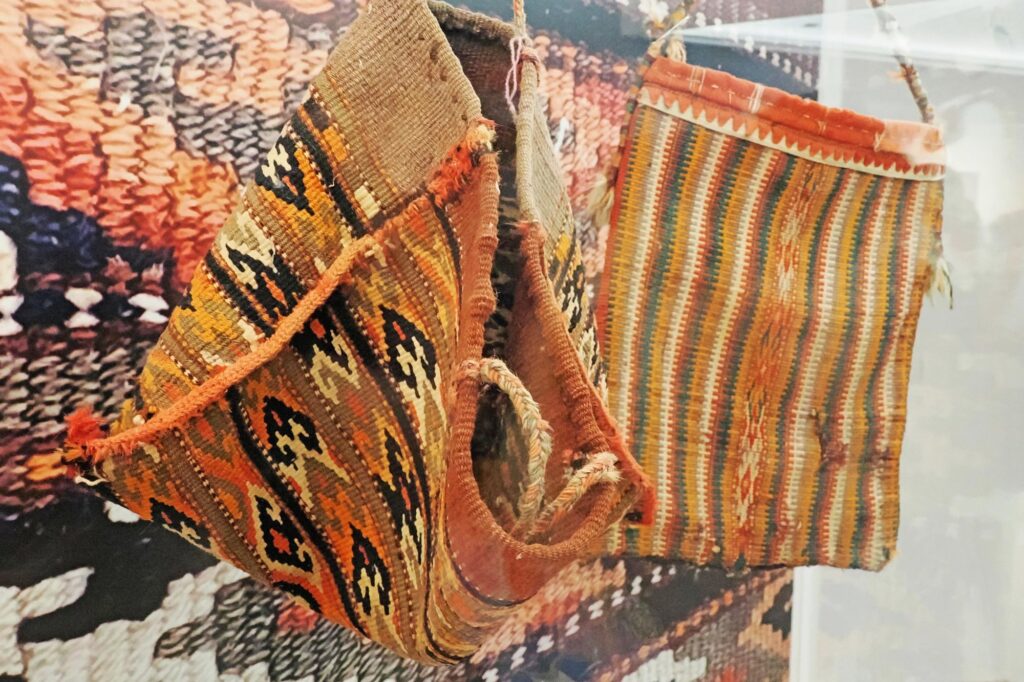
Particularly impressive is the stonemasonry collection, honoring the craftsmanship that made Benkovac stone famous far beyond the region. The museum also preserves a collection from the Homeland War, a rich photo archive, and a library. But perhaps the most unique and photogenic exhibit awaits at the very top of the castle: Da Vinci’s three-barreled cannon from the 15th century, the only one of its kind in the world, cast according to the original sketch of the great genius. In Benkovac, history truly has many faces – and each tells its own story.
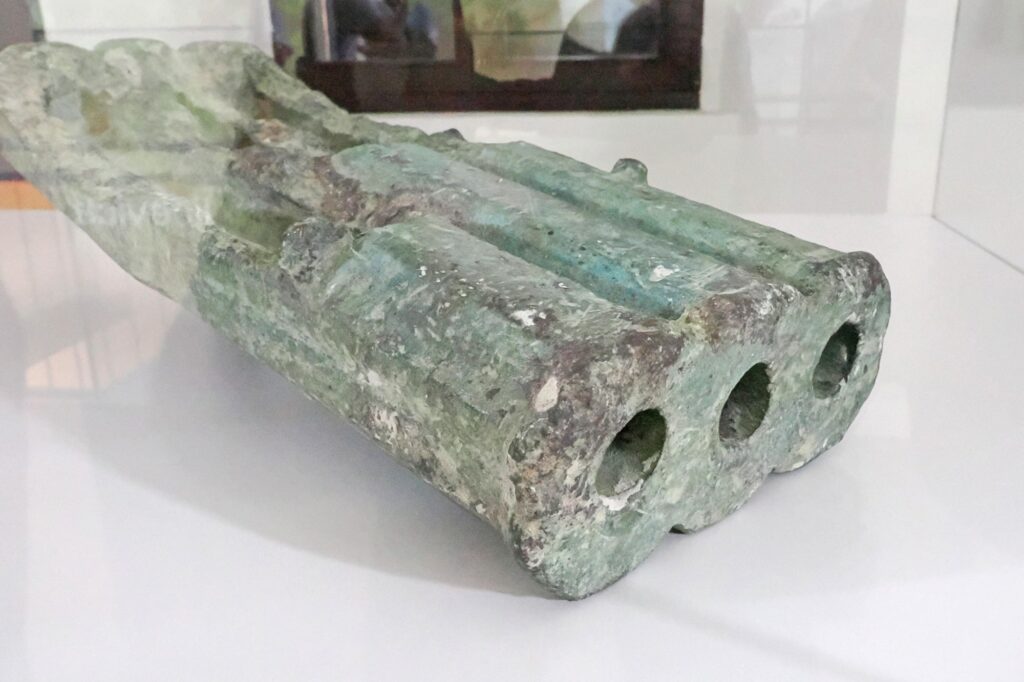
The museum was founded in 1983 and plays an important role in preserving the identity of this region, which, throughout its turbulent past, was at times an Ottoman fortress, an Austro-Hungarian stronghold, and a place of fierce local resistance. Thanks to its exhibits, you’ll better understand why Benkovac is not just a transit stop on the way to the sea, but a place worth exploring more deeply – through its people, heritage, and the stories that echo through the stone walls of the Kaštel.
Cerovačke Caves: An Underground Spectacle
When summer shows its hot face, you can cool off in the shade of the Cerovačke Caves. If you’re fascinated by places where nature whispers its ancient stories, these caves are a destination you must not miss. Located in the southern part of the Velebit Nature Park, above Gračac, they are the largest speleological site in Croatia open to the public – and a true time machine into the distant past.
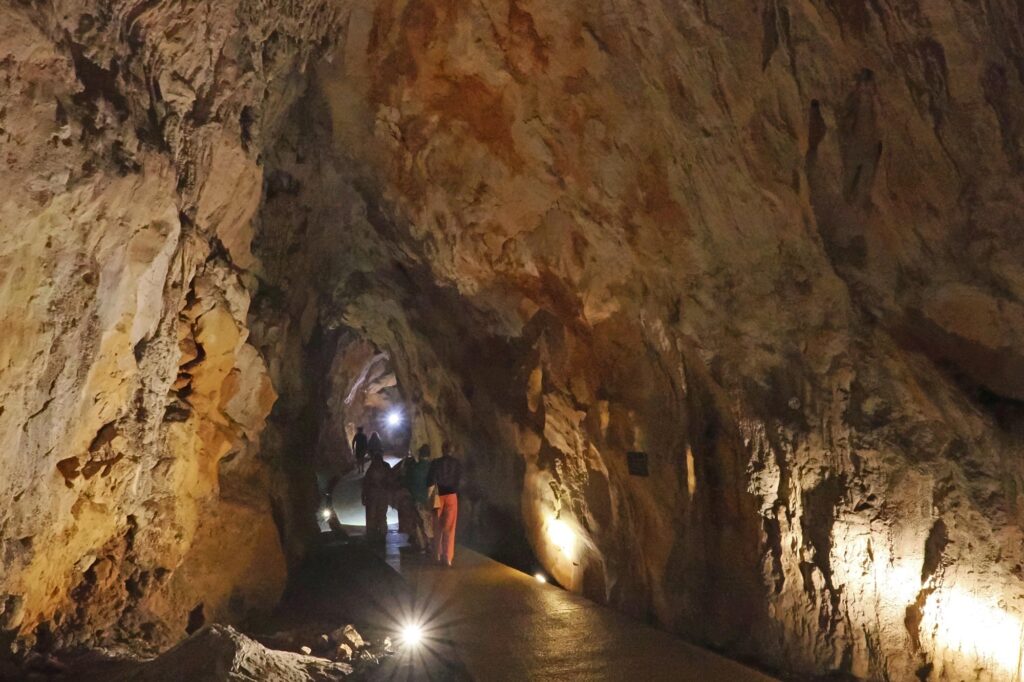
Although the caves are a “cool” attraction in every sense of the word, the path to them is anything but easy. The climb to the entrance is steep, rocky, and demands proper footwear – so forget flip-flops. Bring a bottle of water, a spare shirt, and definitely a jacket or warm hoodie, as the temperature inside the cave is only 6°C year-round. The Cerovačke Caves consist of three interconnected systems – Lower, Upper, and Middle – which together form an underground labyrinth over eight kilometers long. Not all passages are open to visitors, but what is accessible will certainly leave you in awe.
The Zadar Hinterland
Here, with a professional guide, you literally step back thousands of years – through natural halls adorned with stalactites and stalagmites, but also through traces of life etched into the rocks of this karst world. In the caves, archaeologists discovered bones of prehistoric animals and evidence of human presence from long-forgotten eras. Walking through this underground world, I felt as though I was walking through memories older than anything I had ever known.
The Cerovačke Caves are not just a geological wonder. They are a reminder of how patient, powerful, and fascinating nature can be. And you, as a traveler through time, are given the chance here for quiet admiration and learning.

